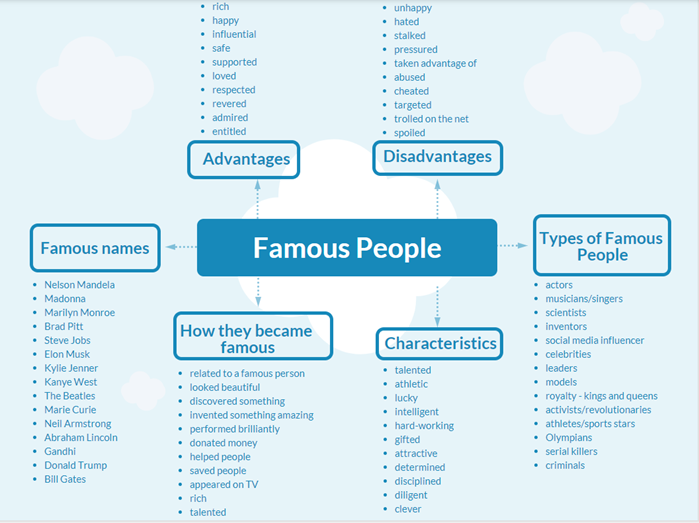In our previous article on using mind maps to build your vocabulary we told you what mind maps were, and how they can be used to increase your range of vocabulary.
Being able to talk about a range of everyday topics is important for everyday communication. We are all aware of what is happening around us in the world and we can communicate about these topic areas easily in our own languages. However, it can be difficult to discuss topics in the same way when we have to use English. By increasing your range of English vocabulary, it is easier to think of what to say quickly and it helps to understand the topics you are listening to, reading, writing, or speaking about.
We mentioned that you can build your vocabulary resource by reading daily, watching English programmes and movies, singing in English and by studying word lists. You can also build your vocabulary by using mind maps.
What is a mind map?
Mind maps are a visual representation of a topic area including words and phrases connected to this topic. By arranging the words and phrases in a pattern, this helps us to remember the text more easily than if it was presented in lists.
If you organise language and ideas in a way that makes it easier for you to remember and use on test day, this will boost your performance. It will not only help you prepare for the IELTS test, but it will also mean that you can communicate better and understand more using a wider range of English vocabulary.
What does a wider range of vocabulary mean?
In order to reach a band 7 and higher, you need to have a flexible resource that is used to discuss a variety of topics. You also need to show that you can use some less common and idiomatic vocabulary, showing an awareness of style and collocation. If you can't access the right words, you need to use paraphrase to express what you are trying to say. Look at the following links to read descriptions of the different band scores for IELTS Speaking and Writing.
What do the terms in the band 7 lexical resource description mean?
flexible resource: being able to access the right words and phrases to talk about a range of different topics (without pausing or using the wrong words)
less common and idiomatic language: being able to use less common words, or phrases that have idiomatic meaning.
awareness of style and collocation: Using words that go together correctly and that are grammatically correct. For example, 'environmental pollution', 'steep rise', 'an improvement in'.
uses paraphrase successfully: being able to fill a vocabulary gap successfully by using other words and phrases (synonyms or antonyms) to communicate. For example, 'disappointed' - I felt so sad when my holiday was cancelled, I wasn't happy, I was sad about it because it happened again.
So, being able to access a range of words and phrases about different topics will make it easier for you to reach a higher band.
What are common IELTS topics?
In our last article on building your vocabulary with mind maps, we asked you to explore some topic areas and to create mind maps from the list we gave you. Our previous article showed you two mind maps; 'the environment' and 'hobbies and interests'. We also created a third mind map for you in our article on how to perform at your best in the part 3 discussion in the IELTS Speaking test.
This mind map explores vocabulary related to famous people and celebrities.

In our article today, we will share two more mind maps with you - tourism and travel and health and diet.
the environment
hobbies and interests
famous people and celebrities
tourism and travel
health and diet
